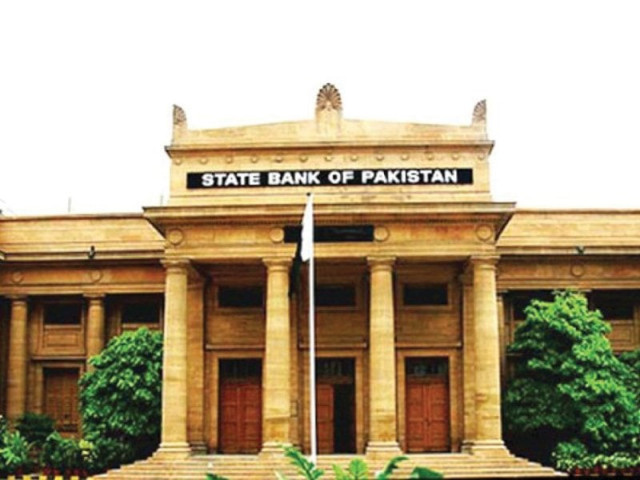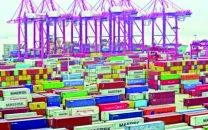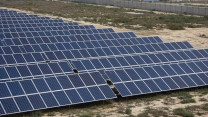Monetary policy: SBP raises key interest rate by 50 basis points to 6.5%
It now hits a three-year high as Pakistan prepares to tackle with inflationary pressure ahead

It now hits a three-year high as Pakistan prepares to tackle with inflationary pressure ahead. PHOTO: FILE
The rate has now hit a three-year high of 6.5% and comes as Pakistan prepares to deal with emerging inflationary pressure mainly arising from a "sharp increase in international oil prices".
This is the second surge in the rate since January 2018 when the central bank increased the then four-decade low rate of 5.75% to 6%. Cumulatively, it has revised up the rate by 75 basis points in the second half of current fiscal year 2018.
The uptrend in international oil prices is also expected to boost Pakistan's import bill, widen the trade and current account deficits, deplete critically low foreign exchange reserves and further reduce the country's import capacity that currently stands at less than two-and-a-half months.
SBP's liquid foreign exchange reserves have seen a net reduction of $5.8 billion and now stand at $10.3 billion as of May 17, 2018. Reflecting increasing pressures in the external sector, the rupee has also depreciated by 9.3% against the US dollar since December 2017.
Additionally, rupee depreciation may contribute in a likely uptick in inflation numbers in the time to come.
Monetary policy: Contrary to expectations, SBP keeps key interest rate unchanged at 6%
In its Monetary Policy Committee (MPC) assessment, the SBP said balance-of-risks to the sustainability of the healthy-growth-low-inflation nexus have shifted due to a deteriorated balance of payments picture despite an increase in exports and some deceleration in imports.
The deterioration is seen due to "a sharp increase in international oil prices and limited financial inflows to date".
Second, the revised estimate for fiscal deficit stands at 5.5% of GDP as compared to the initial target of 4.1% for FY18, reflecting a significantly higher level of fiscal expansion than previously anticipated.
"These twin deficits, depicting the elevated aggregate demand in the country, are adversely affecting near-term macroeconomic stability," it said.
The headline CPI inflation remains moderate averaging 3.8% during the first 10 months of FY18, mainly owing to low food inflation. "Contrary to this, average year-on-year non-food and non-energy-core inflation during the last two months has risen to 6.4%, which reflects the building up of inflationary pressures in the economy," it said.
Monetary policy: Defying expectations, SBP increases interest rate to fight inflation
A significant change in the outlook for international oil prices with its impact on upward adjustments in domestic oil prices, a strong demand, a lagged pass-through of exchange rate adjustments, food inflation maintaining its current course and the stoking of survey-based measures of inflationary expectations will largely determine the inflation path in the remaining period of FY18 and for FY19.
Conditional upon these developments, the average inflation for FY18 is projected to remain within SBP's model-based range of 3.5-4.5% "whereas the average FY19 inflation is estimated to be marginally above the annual target of 6%," it said.
The government has set the real GDP growth target of 6.2% for FY19 keeping in view strong growth momentum in agriculture and large scale manufacturing sectors and the upcoming investments in auto and construction allied industries. "However, the SBP's assessment of overall macroeconomic picture suggests that this target is ambitious and would critically depend on managing the growing pressures on the external account, while ensuring that average inflation is contained close to its target in FY19," it said.
Consumer financing saw a net expansion of Rs69 billion, which contributes to higher demand of industrial products, especially of automobiles and consumer durables. Barring the aforementioned risks associated with growth and recovering commodity prices, these trends are likely to persist in the coming months of FY19 as the private sector continues to adjust its funding needs in line with the requirements of the growing economy, especially related to CPEC investments.
Despite a strong recovery in exports (year-on-year increase of 13.3% during Jul-Apr FY18) and a moderate increase in workers' remittances (year-on-year growth of 3.9%), growing imports to support higher economic activity and the sharp increase in oil prices have pushed the current account deficit to $14 billion during the first ten months of FY18, which is 1.5 times the level of deficit realised during the same period last year.


















COMMENTS
Comments are moderated and generally will be posted if they are on-topic and not abusive.
For more information, please see our Comments FAQ